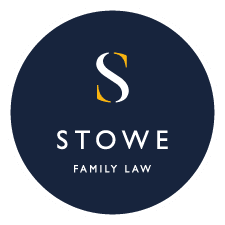A week has passed since the US Supreme Court overturned Roe v Wade to remove the constitutional right to legal abortion. Here Stowe Family Lawyer Megan Brookfield reflects on the unparalleled decision, and what it means.
Last week, the US Supreme Court overturned the landmark case of Roe v Wade 1973, which provided women with a constitutional right to an abortion. The opinion, drafted by Justice Samuel Alito stated that the judgement in the case was ‘egregiously wrong”.
Roe v Wade
The Court in the landmark 1973 case ultimately determined that it was a woman’s right to privacy to seek an abortion during the first trimester of pregnancy. After the first trimester, the ruling allowed states to regulate abortions, except when necessary to protect the life or health of the mother. Thereafter, the later case of Planned Parenthood v Casey 1992 reaffirmed the landmark case and a woman’s right to abortion, however it broadened the power given to state to regulate and restrict abortions. Several states already had restrictive legislation in place following this case.
The new ruling on Friday 24th June came from the case of Dobbs v Jackson Women’s Health Organisation. The Lord Justices who ruled on this case provided that abortion is no longer a constitutional right and instead, each individual state shall determine whether they will allow abortion to be legalised. It is expected that over half of the states in the USA will likely restrict abortion access.
It is understood that a number of these states have already passed trigger laws which automatically ban abortion and such laws came into effect the moment Roe v Wade was overturned. Whilst some may carry an exception to the prohibition where there is a risk to the life of the mother, some states who impose the ban will not allow exemptions for cases involving rape or incest.
It is extremely important to remember that abortion is not purely for women who do not want to be pregnant. Abortion procedures also form a major part of healthcare for women who wanted to carry their pregnancy to full-term, but now face life threatening issues such as ectopic pregnancies, miscarriage, stillbirth, or medical conditions that are not compatible with life. Irrespective of the circumstances, it’s indisputable that without safe and controlled management of abortion, women risk significant and long-term medical complications, trauma, and potential death.
What the decision means
Whilst pro-life campaigners celebrate the decision, the overturning of this landmark case is indeed going to have a number of widespread consequences. It is important to remember that whilst the US may prohibit abortions, it does not mean they are not going to continue to happen.
Instead, to seek a legal abortion some women will travel thousands of miles to states which do continue to allow it. It’s also likely there will be a rise in home abortions and a reduction in the number of medical professionals who are willing to perform this procedure which now carries the risk of prosecution. In particular, for women who may experience financial difficulty and are unable to travel to a state which allows for abortion to take place, we are likely to see a rise in DIY abortions which carries significant risks.
Understandably, thousands of people have gathered to protest outside the US Supreme Court, outraged by the decision. The true extent of the impact the removal of the right to abortion is likely to have on America and the rest of the world is yet unknown. There are however a number of assumptions which can be made about the outcomes for pregnant women and their families:
- The health of women will undoubtedly suffer
- Lack of access to abortion will compound and cause financial difficulty
- Mental health issues are almost certainly going to rise
- There will also be an increase in children being placed into the care system.
What’s next?
Whilst the recent case solely deals with the issue of abortion, Justice Clarence Thomas states within his opinion that a number of other landmark cases should be revisited. These cases are Griswold v Connecticut 1965, a case in which the Court ruled that married couples should be protected to buy and use contraceptives without government restrictions, Lawrence v Texas 2003, which legalised same sex relationships and sexual activity in every state across USA, and Obergefell v Hodges 2015, which legalised same sex marriage.
This is indeed a very concerning time for America and the rest of the world. For women in America, a law which was in place protecting their right to abortion for half a century has now been overturned, removing a significant layer of autonomy. This highly sensitive and multifaceted issue, is now the topic of an intensely controversial social and political debate. A reversal of legislation to this extent is almost unprecedented and as such has the potential to affect the rights of more women globally.


